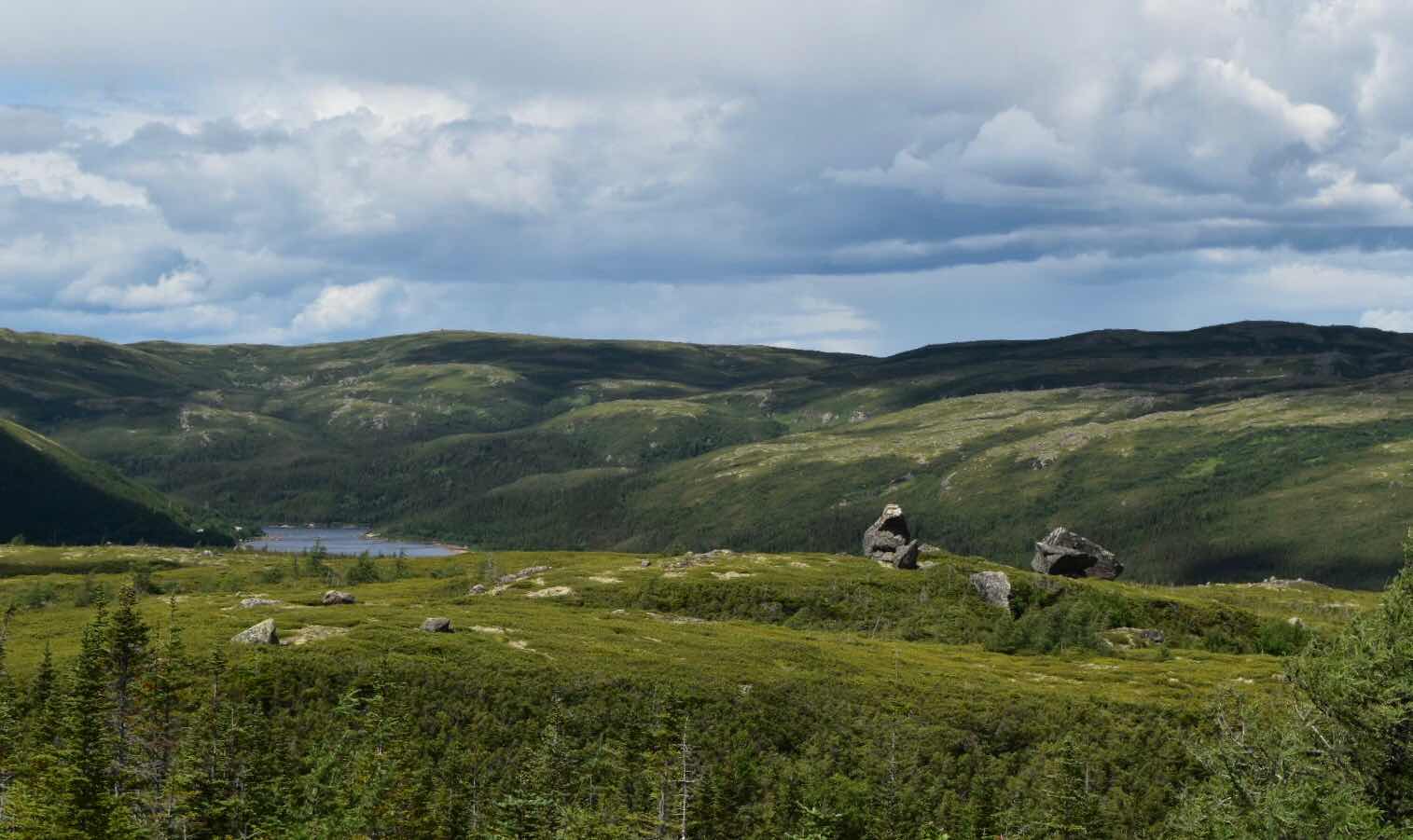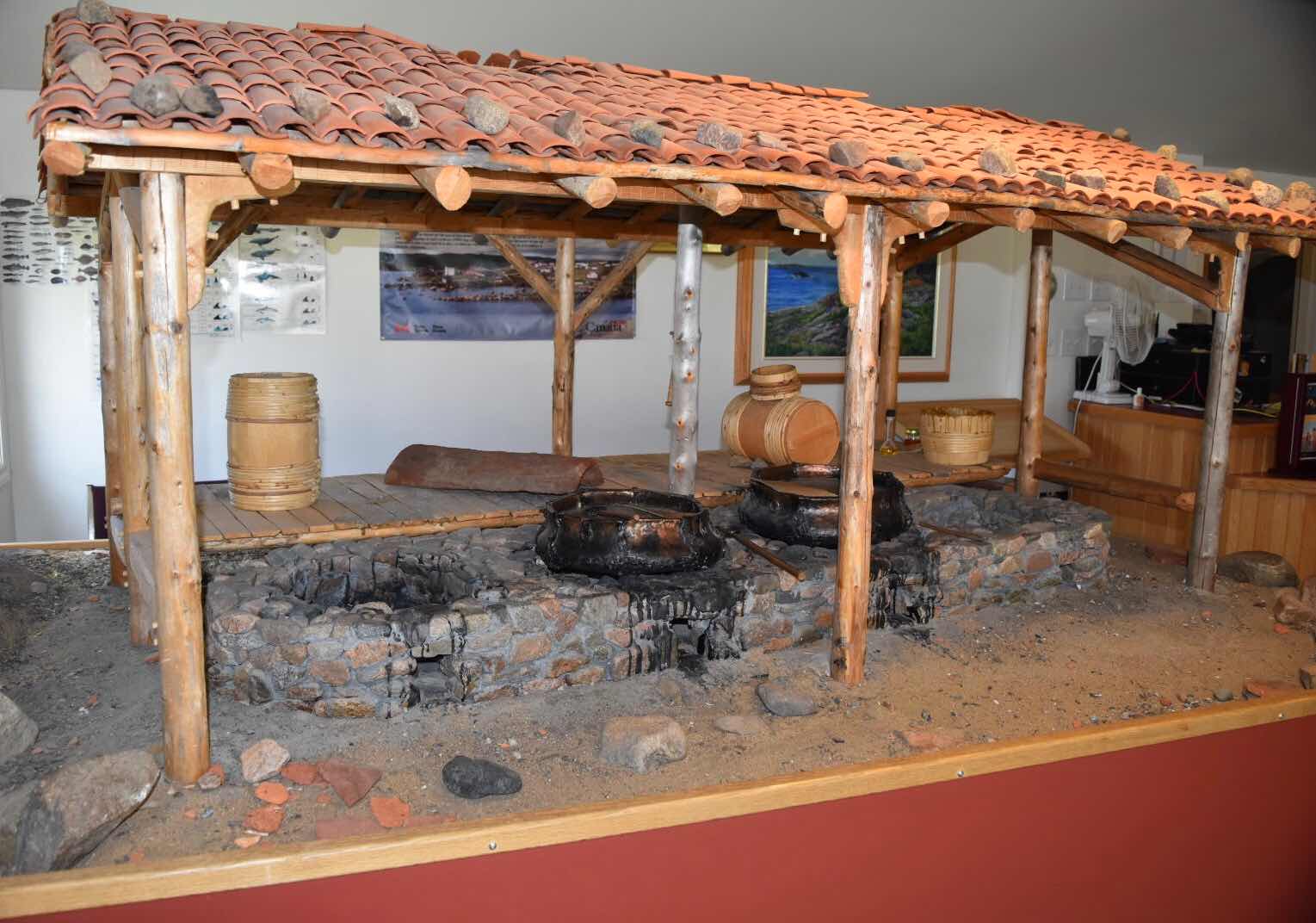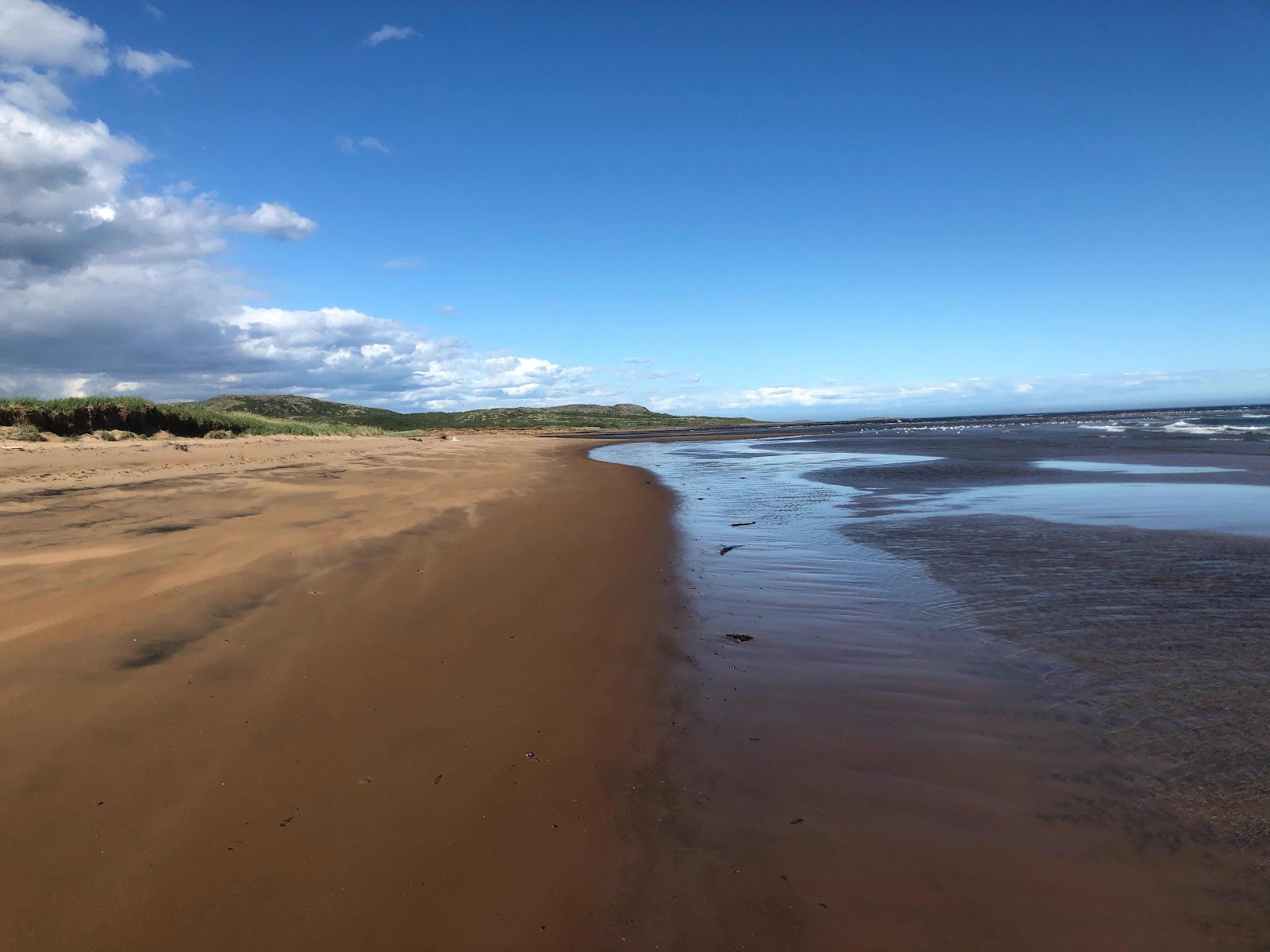Day 4 (July 22, 2020): Labrador Straits
I have had the opportunity to visit Labrador on several occasions with my work. The first time, in 1988, I presented tourism seminars in Cartwright, Happy Valley and Labrador City. Since then, my work on several indigenous projects and files has taken me to Goose Bay, Natuashish and Nain. Pam, however, has never had the opportunity to visit The Big Land. So our trip to the Northern Peninsula presented a great chance for us both to see a part of Labrador that has always held our curiosity. This morning, the long-awaited moment arrived.
We left St. Anthony at 7:30AM and arrived at the Labrador Marine ferry terminal in St. Barbe at 9AM. It took a long time for the inbound ferry to offload and to load the traffic bound for Blanc-Sablon: we were the last to board, at 10:20. We were amazed at the number of transport trucks that loaded onto the Qajak W, the 2010-built Norwegian ferry that started serving the route last year. Due to COVID, it was necessary to stay in our vehicle for the entire crossing, so we saw nothing of the journey. It's roughly a five-mile journey. We drove off the ferry in Blanc-Sablon, Quebec at 12:30PM.
Quebecers in the area are intermarried with Labradorians, and they routinely take the ferry to Newfoundland to purchase goods and to seek health care. However, due to interprovincial transporation limitations during COVID, they are forbidden to use the ferry, which has led to many demonstrations in recent months.
We were immediately gob-smacked by the topography, both on the Quebec side and as we entered Labrador. Stunning... large... empty.... pristine. I'm not sure what our preconceived notions were about this part of Labrador, but we were totally overwhelmed by everything we saw today. Coves, beaches, massive headlands, quaint fishing villages unfurled one after another.
We drove the 80KM to Red Bay to see the National Historic Site that interprets the Basque whaling station of the 16th century. A hike at Red Bay to see bone remains of the whales from that century, and a visit to Pinware River Provincial Park, were highlights of the afternoon.
Our Hotel Florian in Forteau is providing very modern and comfortable accommodation and served up a great meal, with a view of Forteau's bay.
Labrador has all the ingredients of a perfect place to visit: great sights, no crowds, no stress, great accommodation, and all under sunny skies and 24 degrees. It has been a very fulfilling day.
Every place has its own local flavour and way of doing things. All the way up the Northern Peninsula, you see massive piles of logs next to the highway. It appears to be an incredible way of storing personal wood in an easily accessible manner, using an honour system - "I don't take your wood, you don't take mine."
And here's another example: vegetable gardens planted literally right next to the highway, in the middle of nowhere, and not attached to private property.
Driving up the Peninsula, the community names provide great entertainment - or great reflection! Deadmans Cove? Not exactly a cheery-sounding place! Nameless Cove? Not exactly the most creative.
The Qajaq W, built in Norway in 2010, is operated by Labrador Marine to ply the route two or three times each direction per day between St. Barbe, NL and Blanc-Sablon, QC. The crossing takes about 75 minutes.
It felt weird to be in Quebec, given that it is forbidden (unless you quarantine for 14 days after visiting). But we had a 6KM zip from the ferry in Blanc-Sablon to the Labrador border.
If you've ever wondered what a fishing village would look like if it was one layer in a multi-layer cake, then visit Blanc-Sablon!
And if you've ever wanted to feel like a ship out of water, then Blanc-Sablon is for you!
So we were in Newfoundland-Labrador, took a ferry to Quebec, then entered Newfoundland-Labrador again -- all within the space of an hour!
The white sands at L'Anse-au-Clair, the first village you pass after the Labrador border.
Unlike the log piles of the Northern Peninsula, logs here are arranged in tent-formation. This property in Pinware used them as a means of supporting their flags.
Just after getting off the ferry in Blanc-Sablon, we saw a pole with all the family names in the community. It seems to be a popular community thing to do here - we saw it in Pinware.
We had heard good and not-so-good reports about the roads in Labrador. Honestly, we were beyond impressed! The Newfoundland-Labrador Government has invested a great deal in the Trans-Labrador Highway. It is a great highway to drive - at least from the Quebec-Labrador border to Red Bay. And hardly any traffic.
A big sky in the Big Land! The terrain, the pristine forests, the rivers, the sky - it's a palette of natural perfection.

The Pinware River is a mighty salmon-fishing river.

Just another example of the vastness of Labrador. And boulders just strewn upon the land at random. It's just incredible!

Red Bay

Red Bay

Red Bay

The view of Red Bay from Boney Shore.

"I'm the king of this boulder!" (Boney Shore in Red Bay)

Boney Shore in Red Bay is still littered with right whale bones, left by the Basques in the 16th century.

The new Parks Canada museum at Red Bay was closed, due to Covid. The older site, just down the road, was still opened. The Basque galleon that sank at Red Bay in the 1500s lies on the seabed just 30 meters from the waterfront museum site below.


A Parks Canada mock-up of the Basque whaling production area in Red Bay. Large vats were used to separate the whale oil.

A model of the galleon sitting on the harbour floor in Red Bay. Filled with 800-1000 barrels of whale oil, it broke anchor in a storm in the 16 century, ran aground and sank. The whale oil barrels were saved, along with most of the ship's contents, and no one was killed in the incident.

The stunning beach at Pinware River Provincial Park, where the Pinware River empties into the Strait of Belle Isle.


West St. Modeste

Labradorians have a sense of humour!

Sunset from our hotel in Forteau.
The Pinware River is a mighty salmon-fishing river.
Just another example of the vastness of Labrador. And boulders just strewn upon the land at random. It's just incredible!
Red Bay
Red Bay
Red Bay
The view of Red Bay from Boney Shore.
"I'm the king of this boulder!" (Boney Shore in Red Bay)
Boney Shore in Red Bay is still littered with right whale bones, left by the Basques in the 16th century.
The new Parks Canada museum at Red Bay was closed, due to Covid. The older site, just down the road, was still opened. The Basque galleon that sank at Red Bay in the 1500s lies on the seabed just 30 meters from the waterfront museum site below.
A Parks Canada mock-up of the Basque whaling production area in Red Bay. Large vats were used to separate the whale oil.
A model of the galleon sitting on the harbour floor in Red Bay. Filled with 800-1000 barrels of whale oil, it broke anchor in a storm in the 16 century, ran aground and sank. The whale oil barrels were saved, along with most of the ship's contents, and no one was killed in the incident.
The stunning beach at Pinware River Provincial Park, where the Pinware River empties into the Strait of Belle Isle.
West St. Modeste
Labradorians have a sense of humour!
Sunset from our hotel in Forteau.
Comments
Post a Comment